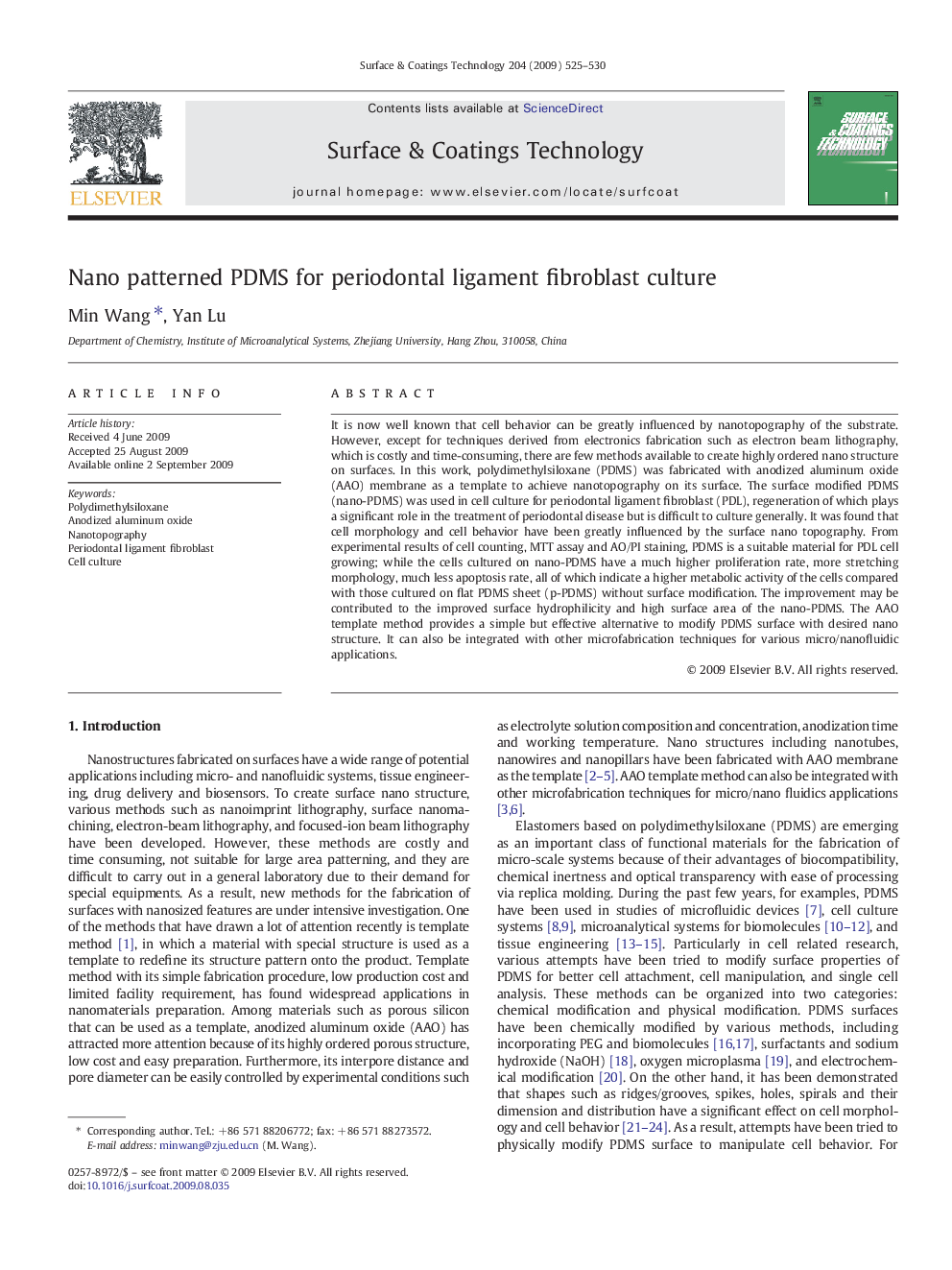| Article ID | Journal | Published Year | Pages | File Type |
|---|---|---|---|---|
| 1660564 | Surface and Coatings Technology | 2009 | 6 Pages |
It is now well known that cell behavior can be greatly influenced by nanotopography of the substrate. However, except for techniques derived from electronics fabrication such as electron beam lithography, which is costly and time-consuming, there are few methods available to create highly ordered nano structure on surfaces. In this work, polydimethylsiloxane (PDMS) was fabricated with anodized aluminum oxide (AAO) membrane as a template to achieve nanotopography on its surface. The surface modified PDMS (nano-PDMS) was used in cell culture for periodontal ligament fibroblast (PDL), regeneration of which plays a significant role in the treatment of periodontal disease but is difficult to culture generally. It was found that cell morphology and cell behavior have been greatly influenced by the surface nano topography. From experimental results of cell counting, MTT assay and AO/PI staining, PDMS is a suitable material for PDL cell growing; while the cells cultured on nano-PDMS have a much higher proliferation rate, more stretching morphology, much less apoptosis rate, all of which indicate a higher metabolic activity of the cells compared with those cultured on flat PDMS sheet (p-PDMS) without surface modification. The improvement may be contributed to the improved surface hydrophilicity and high surface area of the nano-PDMS. The AAO template method provides a simple but effective alternative to modify PDMS surface with desired nano structure. It can also be integrated with other microfabrication techniques for various micro/nanofluidic applications.
